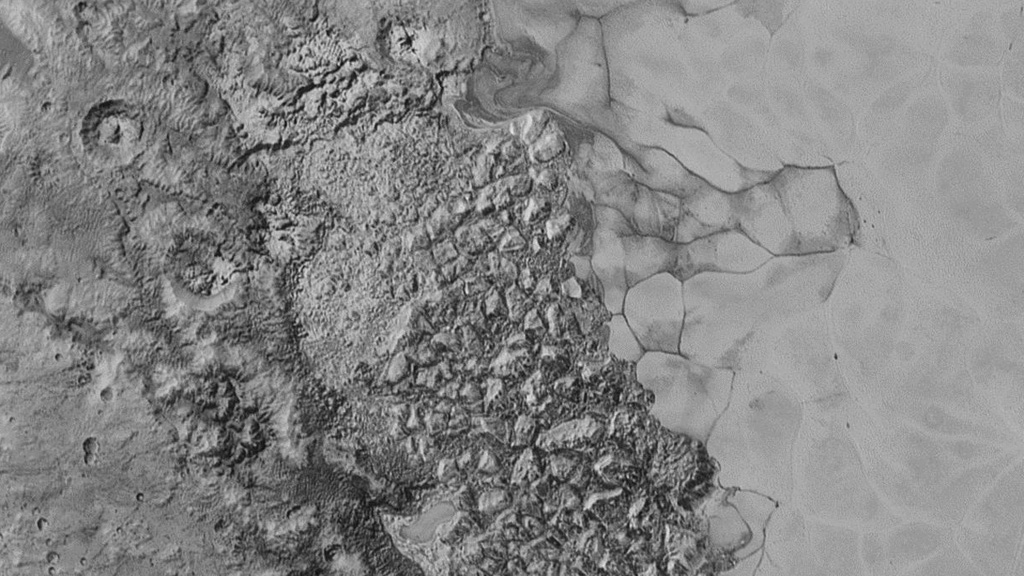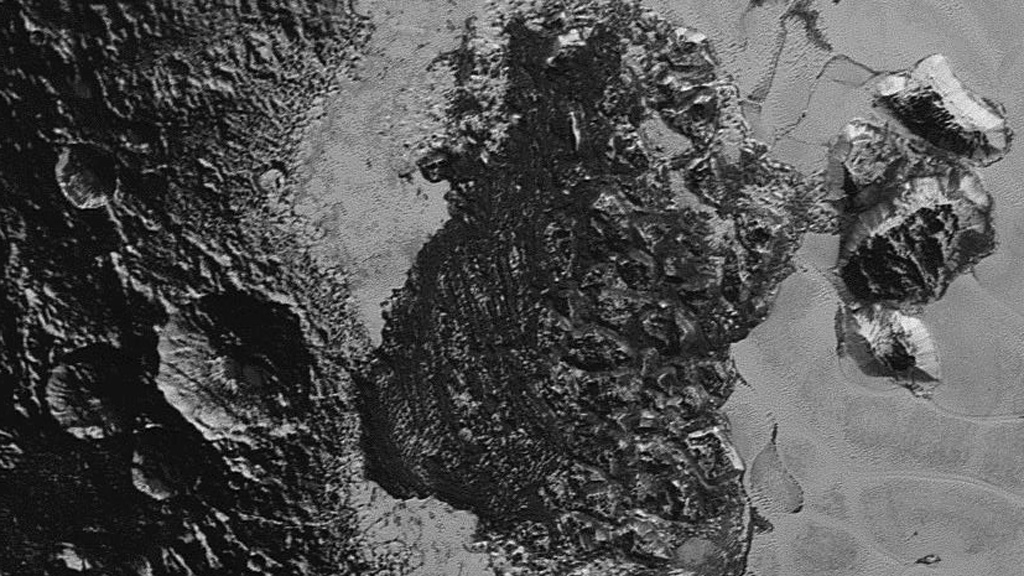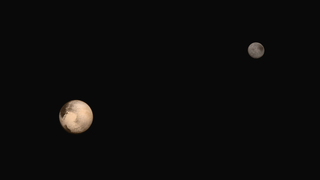Planets and Moons
ID: 12080

Pluto has long been a mystery, a dot at our solar system’s margins. The best images, even with NASA’s Hubble Space Telescope, were fuzzy and pixelated. In July 2015, NASA’s New Horizons spacecraft flew past Pluto and captured the sharpest views of the dwarf planet to date. One of the most striking areas, informally named "Sputnik Planum," is a sweeping, frozen plain the size of Texas and ringed by mountains of ice. Its smooth deposits are unmarred by impact craters, a stark contrast to the rest of Pluto’s battered surface. As a result, scientists believe the region formed recently, within the last 10 million years. This contradicts past depictions of Pluto as an unchanging world. By analyzing images taken during the flyby, scientists hope to unravel more of the dwarf planet’s history. Watch the video for an up-close look at Pluto.



A Close Look At Pluto




Related Story
Story Credits
Please give credit for this item to:
NASA's Goddard Space Flight Center
Video courtesy of NASA/Johns Hopkins University Applied Physics Laboratory/Southwest Research Institute/S. Robbins
Images courtesy of NASA/Johns Hopkins University Applied Physics Laboratory/Southwest Research Institute
NASA's Goddard Space Flight Center
Video courtesy of NASA/Johns Hopkins University Applied Physics Laboratory/Southwest Research Institute/S. Robbins
Images courtesy of NASA/Johns Hopkins University Applied Physics Laboratory/Southwest Research Institute
Short URL to share this page:
https://svs.gsfc.nasa.gov/12080
Keywords:
SVS >> App
NASA Science >> Planets and Moons
https://svs.gsfc.nasa.gov/12080
Keywords:
SVS >> App
NASA Science >> Planets and Moons








